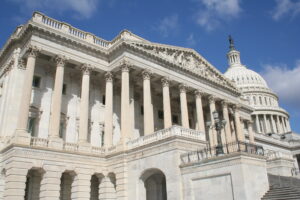Gold Retreats from Two-Week High as Dollar Gains
Gold pulled back after Friday’s pop, as a stronger dollar made bullion pricier for overseas buyers. Spot gold dipped 0.2% to $3,364/oz while December futures eased to $3,410. The retreat came after gold touched its highest level since August 11 on Friday, following Fed Chair Powell’s Jackson Hole speech.
Traders still see an 85–90% chance of a 25bp Fed cut on September 17, supportive for gold in the long run. In the near term, however, gold is tracking the dollar. UBS analyst Giovanni Staunovo noted Powell’s comments point to only a modest quarter-point cut. That outlook has supported the dollar and weighed on gold prices. Silver edged lower too, down 0.3% to $38.72, while platinum fell 1.1% to $1,346.21.
Analysts remain bullish on gold’s outlook. Han Tan of Nemo.Money expects spot gold to reach new record highs above $3,500. This assumes the Fed continues its easing path and central banks keep buying.
Jackson Hole: Easier Policy Talk, Tough Trade-offs
Powell signaled openness to cutting rates as labor-market risks rise, but inflation hasn’t fully cooled — leaving officials split on timing. The Fed Chair described the economy as presenting a “challenging situation” with inflation still above the 2% goal and rising, while the labor market shows signs of weakness. Markets now lean toward a quarter-point cut in September, while political pressure and global central-bank divergence keep the path bumpy.
The conference highlighted deep divisions among policymakers, with two governors already dissenting at July’s meeting when rates were held steady. Security was noticeably tighter at this year’s gathering. Political tensions were evident as President Trump pushed for lower rates and threatened Fed officials. Powell unveiled a new policy framework, shifting back to a balanced focus on both inflation and employment. This marks a move away from the 2020 framework, which centered narrowly on persistently low inflation.
Bottom line: The Fed is inching closer to easing, but we’re not there yet.
Fed Chair Search: No Rush on Powell’s Replacement
NEC Director Kevin Hassett says Trump’s decision on who replaces Powell is “another few months” away. Treasury Secretary Bessent is running a “thorough search process” with multiple candidates being interviewed. The extended timeline suggests the administration won’t name a “shadow chair” months in advance, which some feared could disrupt monetary policy.
Prediction markets currently give Kevin Hassett and former Fed governor Kevin Warsh the lead, at 35% each. Both are known for favoring lower rates. Other names include Fed Governor Chris Waller and possibly Michelle Bowman. Trump has publicly praised “both Kevins” as “very good.” Powell’s term ends in May 2026, giving Trump time to decide. Still, markets are already questioning how independent the next chair will be from White House pressure.
Stablecoins Poised to Influence Short-Term Treasuries
New U.S. stablecoin rules are pushing issuers to hold more T-bills as backing, potentially creating a meaningful new buyer at the short end. The $250B market (up 22% this year) could reach $1-4 trillion by decade’s end, say analysts. The recently signed GENIUS Act requires stablecoin issuers to back tokens with dollars or high-quality liquid assets, effectively positioning short-term T-bills as the collateral of choice.
Treasury Secretary Bessent called it a “win-win-win” that expands dollar access globally while boosting Treasury demand. Tether is already the seventh largest buyer of U.S. Treasurys, ahead of several countries, and could potentially replace China and Japan as top holders by 2030. Bank for International Settlements data shows five-day stablecoin inflows of $3.5 billion can lower three-month T-bill yields by 2-2.5 basis points within 10 days.
While still small versus traditional Treasury buyers, rapid growth means stablecoins could soon influence bill yields and market dynamics. Watch this space.
Intel Warns U.S. Government Stake Could Hurt Business
Intel disclosed that Uncle Sam’s new 10% equity stake — acquired by converting $8.9B in CHIPS Act grants — poses real risks. With 76% of revenue from overseas (29% from China alone), the company fears foreign regulations and restrictions could follow. The filing specifically warns that being seen as having a U.S. government shareholder could trigger foreign subsidy laws and additional regulations in other countries.
The government bought shares at a $4 discount to Friday’s $24.80 closing price, diluting existing shareholders. Intel also expressed concern that the government’s stake could limit its ability to secure future grants, as other agencies might be unwilling to provide support or may seek to convert existing grants to equity. The transaction is expected to close on August 26, following CEO Lip-Bu Tan’s meeting with President Trump, who had demanded his resignation over ties to Chinese firms.
The gold angle: With Washington as a major shareholder, political risk rises. By contrast, gold has no board, no management team, no counterparty — nobody can lean on your asset.
Get Gold & Silver Insights Direct to Your Inbox
Join thousands of smart investors who receive expert analysis, market updates, and exclusive deals every week.









